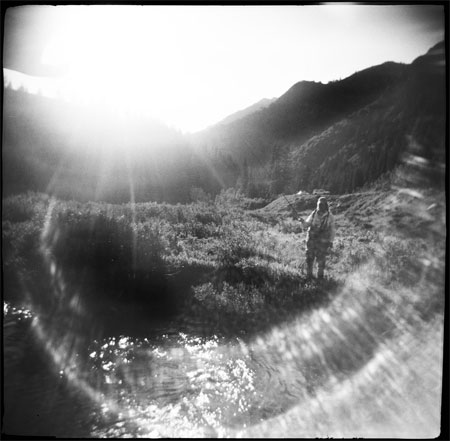Fly Fishing Jazz: Crescendos and Decrescendos

photo by Brian Schiele
NOTES AND TONES are merely elements of a much larger, more complex, mosaic of thought that ultimately creates “music.” Especially in the context of jazz.
Likewise, flies and casts are merely elements of a much larger, more complex, mosaic of thought that creates effective fly fishing.
You can play a D#, and jump up to a B, and that may have some effect. Or you can tie on a Hemingway Caddis and snap a roll-cast into the pool where you saw a fish rise, and that might have an effect also.
But the real “music” happens (in both contexts) when you tie the notes—or the flies and casts—together with things like tempo and volume. The crescendo (<) tells you to get louder. The decrescendo (>) tells you to play softer. In many musical contexts, the rule is that you build in volume to evoke response. That blaring horn grabs attention, right? Well… not always.
The difference between a Coltrane ballad and a John Philip Sousa march is that Coltrane refined (and ultimately defined) the value of the subtle note. Fly anglers should aspire to play Coltrane, rather than Sousa, because in our world, as in jazz, the subtle expression often reaps the greatest rewards.
In other words, sometimes, when you learn to lay off the gas and turn down the volume, you will inevitably catch more fish.
Interestingly, on the river, Mother Nature will often spell it out for you, as clear as sheet music. Where you see that rapid funneling into a run and forming a “V” you should start subtly and softly at the tailout, pinpointing gently and deliberately, then build in intensity and frequency (covering a wider swath) as you reach that crescendo (<) at the head of the run. Conversely, when you see the sweep behind a log or a boulder that turns that current shape upside-down (the lambda), you should cover all your bases at the back end, but dial things down and get slower, and lean on the melodic, when you reach the point.
The more you listen to jazz, the more you will realize that the most important notes happen in a subdued, reserved, yet nonetheless soulful context.
And the more you fish with flies, they more you’ll realize that runnin’ and gunnin’ will only serve to bite you on your backside.
You need to make the soft matter… sometimes, in fact, that’s exactly what matters most. And if you look close enough, the river will tell you exactly when and where to play that way.











